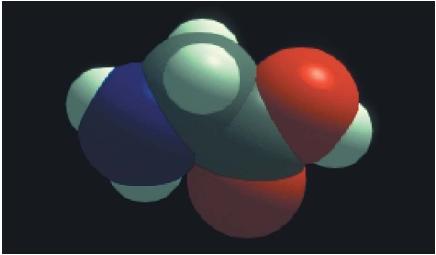Metabolism

Metabolism refers to all of the chemical reactions that take place within an organism by which complex molecules are broken down to produce energy and by which energy is used to build up complex molecules. An example of a metabolic reaction is the one that takes place when a person eats a spoonful of sugar. Once inside the body, sugar molecules are broken down into simpler molecules with the release of energy. That energy is then used by the body for a variety of purposes, such as keeping the body warm and building up new molecules within the body.
All metabolic reactions can be broken down into one of two general categories: catabolic and anabolic reactions. Catabolism is the process by which large molecules are broken down into smaller ones with the release of energy. Anabolism is the process by which energy is used to build up complex molecules needed by the body to maintain itself and develop.
The process of digestion
One way to understand the process of metabolism is to follow the path of a typical nutrient as it passes through the body. A nutrient is any substance that helps an organism stay alive, remain healthy, and grow. Three large categories of nutrients are carbohydrates, proteins, and fats.
Words to Know
Anabolism: The process by which energy is used to build up complex molecules.
ATP (adenosine triphosphate): A molecule used by cells to store energy.
Carbohydrate: A compound consisting of carbon, hydrogen, and oxygen found in plants and used as a food by humans and other animals.
Catabolism: The process by which large molecules are broken down into smaller ones with the release of energy.
Chemical bond: A force of attraction between two atoms.
Enzyme: Chemical compounds that act as catalysts, increasing the rate at which reactions take place in a living organism.
Metabolic pool: The total amount of simple molecules formed by the breakdown of nutrients.
Nutrient: A substance that helps an organism stay alive, remain healthy, and grow.
Protein: Large molecules that are essential to the structure and functioning of all living cells.
Assume, for example, that a person has just eaten a piece of bread. An important nutrient in that bread is starch, a complex carbohydrate. As soon as the bread enters a person's mouth, digestion begins to occur. Enzymes in the mouth start to break down molecules of starch and convert them into smaller molecules of simpler substances: sugars. This process can be observed easily, since anyone who holds a piece of bread in his or her mouth for a period of time begins to recognize a sweet taste, the taste of the sugar formed from the breakdown of starch.
Digestion is a necessary first step for all foods. The molecules of which foods are made are too large to pass through the lining of the digestive system. Digestion results in the formation of smaller molecules that are able to pass through that lining and enter the person's bloodstream. Sugar molecules formed by the digestion of starch enter the bloodstream. Then they are carried to individual cells throughout a person's body.
The smaller molecules into which nutrients are broken down make up the metabolic pool. The metabolic pool consists of the simpler substances formed by the breakdown of nutrients. It includes simple sugars (formed by the breakdown of complex carbohydrates), glycerol and fatty acids (formed by the breakdown of lipids), and amino acids (formed by the breakdown of proteins). Cells use substances in the metabolic pool as building materials, just as a carpenter uses wood, nails, glue, staples, and other materials for the construction of a house. The difference is, of course, that cells construct body parts, not houses, from the materials with which they have to work.

Cellular metabolism
Substances that make up the metabolic pool are transported to individual cells by the bloodstream. They pass through cell membranes and enter the cell interior. Once inside a cell, a compound undergoes further metabolism, usually in a series of chemical reactions. For example, a sugar molecule is broken down inside a cell into carbon dioxide and water, with the release of energy. But that process does not occur in a single step. Instead, it takes about two dozen separate chemical reactions to convert the sugar molecule to its final products. Each chemical reaction involves a relatively modest change in the sugar molecule, the removal of a single oxygen atom or a single hydrogen atom, for example.
The purpose of these reactions is to release energy stored in the sugar molecule. To explain that process, one must know that a sugar molecule consists of carbon, hydrogen, and oxygen atoms held together by means of chemical bonds. A chemical bond is a force of attraction between two atoms. That force of attraction is a form of energy. A sugar molecule with two dozen chemical bonds can be thought of as containing two dozen tiny units of energy. Each time a chemical bond is broken, one unit of energy is set free.
Cells have evolved remarkable methods for capturing and storing the energy released in catabolic reactions. Those methods make use of very special chemical compounds, known as energy carriers. An example of such compounds is adenosine triphosphate, generally known as ATP. ATP is formed when a simpler compound, adenosine diphosphate (ADP), combines with a phosphate group. The following equation represents that change:
ADP + P → ATP
ADP will combine with a phosphate group, as shown here, only if energy is added to it. In cells, that energy comes from the catabolism of compounds in the metabolic pool, such as sugars, glycerol, and fatty acids. In other words:
catabolism: sugar → carbon dioxide + water + energy;
energy from catabolism + ADP + P → ATP
The ATP molecule formed in this way, then, has taken up the energy previously stored in the sugar molecule. Whenever a cell needs energy for some process, it can obtain it from an ATP molecule.
The reverse of the process shown above also takes place inside cells. That is, energy from an ATP molecule can be used to put simpler molecules together to make more complex molecules. For example, suppose that a cell needs to repair a break in its cell wall. To do so, it will need to produce new protein molecules. Those protein molecules can be made from amino acids in the metabolic pool. A protein molecule consists of hundreds or thousands of amino acid molecules joined to each other:
Amino acid 1 + amino acid 2 + amino acid 3 + (and so on) → a protein
The energy needed to form all the new chemical bonds needed to hold the amino acid units together comes from ATP molecules. In other words:
energy from ATP + many amino acids → protein molecule
The reactions by which a compound is metabolized differ for various nutrients. Also, energy carriers other than ATP may be involved. For example, the compound known as nicotinamide adenine dinucleotide phosphate (NADPH) is also involved in the catabolism and anabolism of various substances. The general outline shown above, however, applies to all metabolic reactions.
appreciate.
oil. What is the name of the process used to break the larger molecules
into smaller ones suitable for use as gasoline?